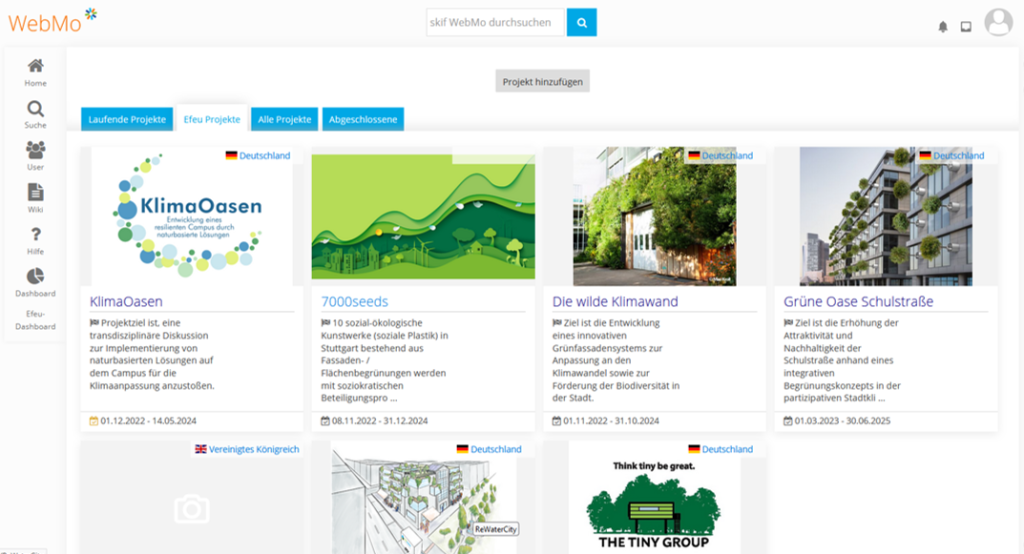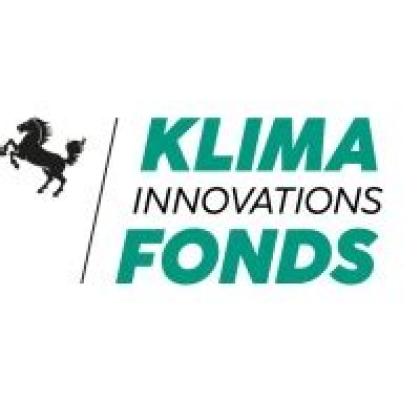| Der Stuttgart Climate Innovation Fund supports innovative solutions to tackle climate change in the state capital of Baden-Württemberg. With a budget of over 20 million euros, this fund is the largest municipal climate innovation fund in Europe. The focus is on promoting projects from science, business and civil society in order to test and implement new approaches for climate-friendly urban development.
We spoke to project manager Hauke Diederich about how our software WebMo is being used for this results-based funding programme. |
 |
Mr Diederich, why did you choose WebMo?
We were looking for a flexible tool to manage various individual projects that are linked together in a large programme. I was familiar with WebMo from my time in development cooperation. The initial customisations to the software were within a financial framework that allowed us to get off to a quick start with a simple procurement process.
What do you use WebMo for as part of the Stuttgart Climate Innovation Fund?
WebMo plays a central role in our project management. From approving projects to financial management and reporting, all processes are captured in WebMo. There are currently around 55 projects being supported by the fund. They all create a profile and enter their basic data and the agreed milestones. As soon as a project informs us that a milestone has been reached, we can check and verify this using the documents uploaded to WebMo. The projects can then apply for their next payment.

Project overview of the ‘Ivy’ funding line in the Stuttgart Climate Innovation Fund’s WebMo
What role does WebMo play in the financial management of the fund?
WebMo gives us an overview of the budget and upcoming payments. The dashboard provides an aggregated view of the milestones that are due in the near future, so WebMo also helps with financial planning.
We are currently working with energypedia consult to integrate realistic budget planning into our WebMo. Milestones are often postponed within the three-year project period and payments are not called up as originally planned. I will soon be able to see at a glance how much money has been disbursed to which projects and how much we will need in each of the coming years.
How do the projects involved like WebMo?
It is a new tool for all projects, but they generally find it intuitive to use. I have received little feedback on WebMo, which I take as a positive, because otherwise there would be more enquiries. The advantage of WebMo is that we can also enter the basic data ourselves and the projects then only have to report their results.
How do you use WebMo to review the achieved results and project impact?
The ‘Results’ section in the WebMo dashboard gives us an overview of which milestones have not or not yet been reached and when the next deadlines for results are due. Projects can report milestones and results and upload project reports. These are then visible to everyone. More sensitive data such as business data is treated separately.
Our ‘Ivy’ funding line, which promotes nature-based solutions for climate impact adaptation together with the non-governmental organisation The Nature Conservancy, also uses WebMo to monitor its key figures. There are several categories in the ‘Impact’ tab. Under ‘Climate Impact Adaptation’, for example, information on newly turfed areas or the number of newly planted trees is recorded.
Impact monitoring is not currently a requirement in our other two funding lines. The projects are all very different - so there is no programme logframe. We are currently working on overarching impact categories for our programme in order to then integrate more results monitoring into WebMo.
Would you recommend WebMo? And do you have any advice for similar programmes or foundations that manage several projects?
Yes, I would recommend WebMo to other funders. It is an effective tool that helps us a lot in our project management.

You should start with a clear idea of what you need the tool for and what it should be able to do. And then just get started.
The energypedia consult team can later add new features and work on further developments. The collaboration with Robert Heine has been very smooth and the team always responds quickly. Energypedia consult also offers user trainings, which I would definitely offer to the projects involved.


